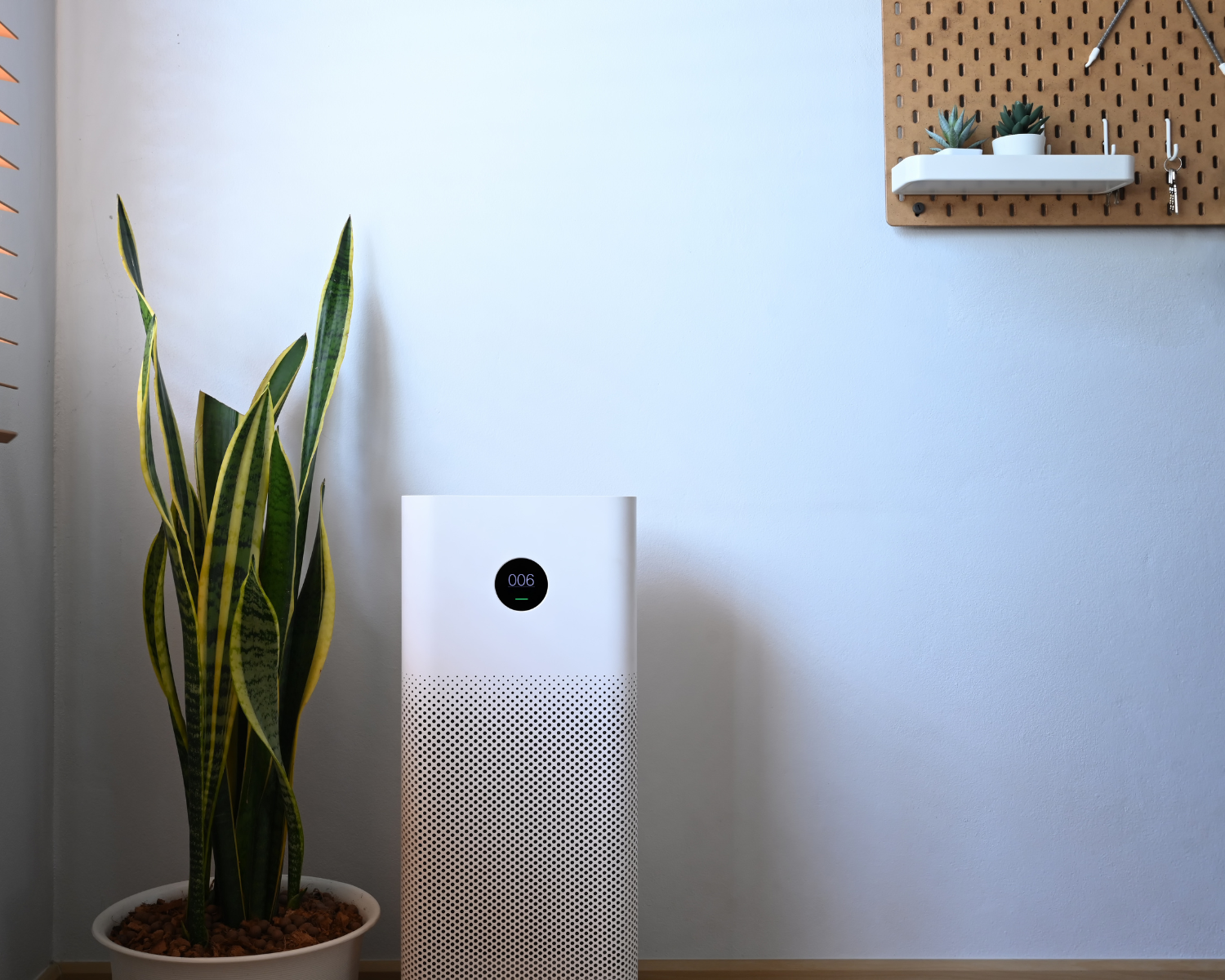The Asia-Pacific region is the largest and fastest-growing market for air quality monitors. Surprised? We aren’t. 17 of the 25 most polluted cities globally are located in this region. Indian cities dominate this list, with 9 of them being mentioned on this leaderboard. While increasing urbanisation and industrial activity are making ambient air quality in India the worst in the world, outdoor pollutants are spilling indoors. Additionally, with indoor sources of air pollutants like paint, indoor equipment, carpeting and much more adding to the mix, today, having an indoor air quality monitor in India is absolutely essential.
The paradox of choice: How to choose an indoor air quality monitor?
The air quality monitoring market is huge and still growing. Mordor Intelligence predicts that the market for both indoor air quality monitors and outdoor ones will be worth US$ 5.08 billion in 2024 and reach as high as US$ 6.73 billion by 2029; this indicates a CAGR of 5.79%. However, market reports by the same company also reveal that the air quality monitoring market is extremely fragmented. Siemens AG, Thermo Fisher Scientific, Horiba, Emerson Electric, 3M, Hawa Dawa GmbH, Honeywell International, Teledyne Technologies, TSI Inc, Merck KGaA, and Agilent Technologies are among the leading players, but no single company has emerged as a clear winner in terms of accuracy, functionality, or market share.
Air monitoring companies, especially those with an indoor air quality monitor on offer, may focus on PM2.5 levels, total volatile organic content (tVOC) levels, formaldehyde, humidity, CO2 or CO. Every indoor air quality monitor differs from the next in terms of accuracy, price, weatherproof-ness, and monitoring range. Products on the market vary based on their sampling method (an indoor air quality monitor may sample the air continuously or intermittently and manually or automatically); they differ in the end user they are designed for (commercial, residential, or industrial); and they may also differ based on geography and climatic conditions. With so many different factors to account for, especially in a country like India, which is struggling with seemingly insurmountable pollution levels, which indoor air quality monitor should you select? It is clear that there is no clear player dominating the market for an indoor air quality monitor in India. So how do you decide which product is right for you?
Buying an air quality monitoring device in India: What to look out for
Whether you want to purchase an air quality monitoring device in India or abroad, there are some product features you should assess before making a decision. But given the high pollution levels in some parts of India, coupled with predicted pollutants in your immediate environment from cigarette smoking, cooking, or heating, you should tailor the decision-making process to your specific environment.
Here is a list of things you should consider to decide if a particular indoor air quality monitor is the right fit for you and your indoor environment:
- Sensors, sensors everywhere
Indoor air quality monitors may be designed specifically to measure particulate matter (PM) levels, VOC levels, carbon monoxide, or any other indoor pollutant or environmental condition like temperature or humidity. Which pollutants an indoor air quality monitor measures is a function of the sensors it is equipped with. Cigarette smoking generates both VOCs and PM2.5, so a monitor with sensors for both would be ideal if there are smokers in your vicinity; if you can’t find a sensor with high-accuracy VOC detection, however, you may as well go with one that detects only PM2.5 levels. If you have a specific pollutant you are using your indoor air quality monitor to detect, prioritise a device with a high accuracy sensor for it. Otherwise, as a general principle, invest in a monitor with sensors for the highest number of air quality parameters. - The importance of accuracy
When firecrackers are being burst in your neighbourhood, it’s peak traffic time on the highway close by, or you’ve recently ventilated the entire house, the indoor air quality (IAQ) in your home will likely change dramatically. It is important to know how safe the air around you is compared to outdoor air levels. In fact, even without such sudden IAQ changes, high-accuracy monitors are essential – what good is a machine that gives you fake news? You can find out how sensitive the sensors in a device are by researching accuracy test data from the product manufacturer, a third-party tester, or individual sensor component suppliers. Ideally, accuracy should fall within the following minimum brackets: ± 10-20% for PM levels; ± 25% for tVOC, ±5% for CO2, ± 3% for relative humidity, and ± 1 mBar for air pressure. - Calibration is key
Over time, the sensor in your indoor air quality monitor will begin to stray from accurate readings. This is normal and to be expected. Conventionally, companies will find methods to recalibrate the sensor. This might involve auto-calibration features, which haven’t demonstrated much reliability. Or it might involve sending your monitor to a technician who can manually calibrate the system, but this has its fair share of logistical challenges. Removing and replacing a degrading sensor is the best solution to the problem, especially for an air quality monitoring device in India, where high pollution levels may lead to a frequent need for calibration. (Through Dew Point, Kaiterra offers this functionality for your indoor air quality monitor in India.) - No rest for the essential: Continuous monitoring
There are two ways in which your indoor air quality monitor may do its job: it may provide a picture of the IAQ for a specified period of time during which it was monitoring your air. Such intermittent monitoring provides a sense of the IAQ at regular intervals of time. On the other hand, your indoor air quality monitor may be continuously detecting the pollutants in your environment and providing you with real-time feedback on the quality of the air you are breathing. The latter is ideal because IAQ can fluctuate drastically in short periods of time, say when you cook or clean. Acute exposure to indoor air pollutants during such periods also has detrimental impacts on your health. So when you have the option, always go for continuous, real-time monitoring.
Buying an air quality monitoring device in India: What NOT to do
When buying an indoor air quality monitor, there are two mistakes you should avoid making:
- Don’t buy integrated air purifiers and air quality monitors
Many air purifiers come with built-in air quality monitors. This may seem to offer value for your money, but there are reasons why the situation may be just the opposite. Many air purifiers which offer the added feature of IAQ monitoring compromise sensor quality since the monitor is not the primary feature of the product. Since air purifiers also have constraints regarding sensor placements, an integrated indoor air quality monitor may have a limited monitoring range, which does not represent the IAQ in the entire room. The monitor may also have a limited number of sensors. Most importantly, an integrated indoor air quality monitor will only unnecessarily inflate the price of your indoor air purifier. - Don’t conflate price with accuracy
Tests by agencies like the South Coast Air Quality Management District (AQMD) in the USA have revealed that there is little correlation between indoor air quality monitor price and accuracy. Just because a monitor has a price tag of several thousand dollars does not mean it is better than a cheaper one. A larger price tag may be due to sensors for a large number of pollutants, weatherproof built for outdoor use, or the ability to detect extremely tiny nanoparticles. While these are all impressive features, they do not have much to do with accuracy, which is arguably the most important feature of your indoor air quality monitor. Essentially, you should look at accuracy data, not price tags, to make an informed decision.




Leave a Reply